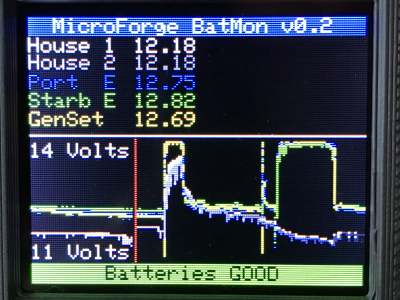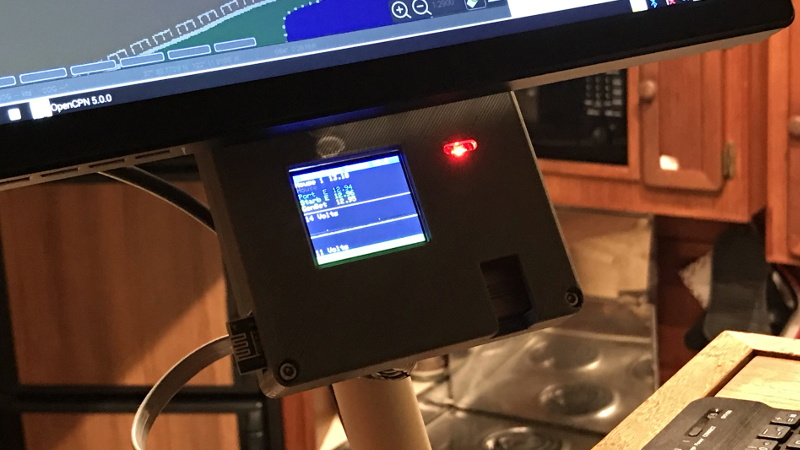A little over a a year ago, we covered an impressive battery monitor that [Timo Birnschein] was designing for his boat. With dedicated batteries for starting the engines, cranking over the generator, and providing power to lights and other amenities, the device had to keep tabs on several banks of cells to make sure no onboard systems were dipping into the danger zone. While it was still a work in progress, it seemed things were progressing along quickly.
But we know how it is. Sometimes a project unexpectedly goes from having your full attention to winning an all-expense-paid trip to the back burner. In this case, [Timo] only recently put the necessary finishing touches on his monitor and got it installed on the boat. Recent log entries on the project’s Hackaday.io page detail some of the changes made since the last time we checked in, and describe the successful first test of the system on the water.
 Certainly the biggest issue that was preventing [Timo] from actually using the monitor previously was the lack of an enclosure and mounting system for it. He’s now addressed those points with his 3D printer, and in the write-up provides a few tips on shipboard ergonomics when it comes to mounting a display you’ll need to see from different angles.
Certainly the biggest issue that was preventing [Timo] from actually using the monitor previously was the lack of an enclosure and mounting system for it. He’s now addressed those points with his 3D printer, and in the write-up provides a few tips on shipboard ergonomics when it comes to mounting a display you’ll need to see from different angles.
The printed enclosure also allowed for the addition of some niceties like an integrated 7805 voltage regulator to provide a solid 5 V to the electronics, as well as a loud piezo beeper that will alert him to problems even when he can’t see the screen.
Under the hood he’s also made some notable software improvements. With the help of a newer and faster TFT display library, he’s created a more modern user interface complete with a color coded rolling graph to show voltages changes over time. There’s still a good chunk of screen real estate available, so he’s currently brainstorming other visualizations or functions to implement. The software isn’t using the onboard NRF24 radio yet, though with code space quickly running out on the Arduino Nano, there’s some concern about getting it implemented.
As we said the first time we covered this project, you don’t need to have a boat to learn a little something from the work [Timo] has put into his monitoring system. Whether you’re tracking battery voltages or temperatures reported by your BLE thermometers, a centralized dashboard that can collect and visualize that data is a handy thing to have.
















“The printed enclosure also allowed for the addition of some atrocities like an integrated 7805 voltage regulator”
Fixed it :-D
Not sure this printed enclosure is exactly waterproof?
It’s mounted inside. It doesn’t have to be water proof. It would be nice, though! But it’s not a requirement.
Do you plan on monitoring current into each battery too? Once the Hall effect hardware or shunts are hooked up and working… then you move into calculating power or Amp-hours for a battery gas-gauge.
While battery discharge is usually a slow moving measurement, consider watching the crank battery voltage while starting an engine. Perhaps over a 1/5 second window (experiment) to find what time captures an excessive voltage drop, giving away a weak battery.
In a past life, I would test and certify emergency radio equipment and backup batteries for SOLAS ships. Since a battery discharge test took too long to prove good batteries, one of the methods used was to operate the radio for 15 minutes and measure the coup de fouet (dip in voltage and bounce back in the first few minutes of discharge). A weak battery would have a deeper dip.
Another application in complicating this project further, is to control relays that interconnect batteries for charging (from the engine alternator) when above 13.5V, and disconnecting them for isolation when your propulsion engines are shut down (voltage drops below 13.0V). This way your start batteries are always isolated from house loads.
Great project… good learnings. Fare well!